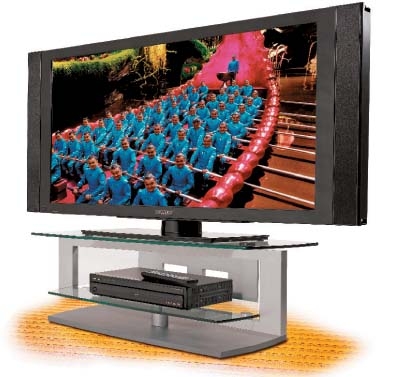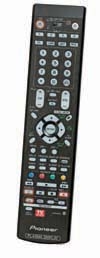Best & Brightest Page 2

Pioneer Elite 50-inch Plasma HDTV by Al Griffin
The downward slope in plasma TV prices over the past two years has been dramatic - you can now find a handful of 50-inch models selling for less than $3,000. That's exciting for shoppers, but just as compelling is that some plasma TV makers still strive to improve image quality in this competitive environment. Pioneer, long one of the most respected names in plasma, is one of them. At $6,500 the Pioneer Elite PRO-1130HD is far from the cheapest 50-inch plasma on the block. But if you're more interested in video performance than getting the best possible deal, you'll want to know what the company's been up to.
The key new development in Pioneer's plasma line is the addition of what the company calls a "crystal emissive layer" that sits between the panel's glass surface and the matrix of plasma cells that create the image. This is said to help the panel transmit light more efficiently, speeding up its response to changes in the video signal and driving down the set's power consumption. The long and short of this is deeper, more CRT-like blacks, more solid pictures in scenes with quick motion, and, presumably, a lower electric bill.
The PRO-1130HD also boasts several other special features. One is Advanced Pure Cinema, a video processing mode that combines a 3:3 pulldown sequence for film-based programs with an unusually fast (72-Hz) screen refresh rate to deliver more natural motion. Another is an Enhanced ISF C3 mode developed in conjunction with the Imaging Science Foundation, which lets professional video calibrators set up special picture presets that you can access along with the regular ones like Movie and Game.
 In addition to high-end videophile stuff, the Pioneer offers amenities like a built-in digital cable-ready tuner with a CableCARD slot, the TV Guide On Screen program guide, and a special menu called Home Gallery for viewing digital pictures via the set's PC Card slot. All cool perks, but the real draw here is the PRO-1130HD's sleek looks. Its glossy black bezel is much thinner than that on most plasma TVs, giving the screen a "floating" effect. It comes with a sturdy stand that also swivels. For good measure, Pioneer throws in a pair of matching side-mounted speakers.
In addition to high-end videophile stuff, the Pioneer offers amenities like a built-in digital cable-ready tuner with a CableCARD slot, the TV Guide On Screen program guide, and a special menu called Home Gallery for viewing digital pictures via the set's PC Card slot. All cool perks, but the real draw here is the PRO-1130HD's sleek looks. Its glossy black bezel is much thinner than that on most plasma TVs, giving the screen a "floating" effect. It comes with a sturdy stand that also swivels. For good measure, Pioneer throws in a pair of matching side-mounted speakers.
Many new plasmas have integrated tuners, but Pioneer still uses a separate media receiver (shown), about the size of a typical DVD player, for hooking up video sources. There are definite advantages to this design - the receiver sits in your rack like an ordinary component, with a single cable running to the TV rather than an unruly tangle of wires. You get a wide range of connection options, including two HDMI inputs, two i.Link ports for hooking up a D-VHS recorder, and an optical digital audio output for routing Dolby Digital soundtracks to your home theater rig.
Beneath the front panel's flip-up door there's a VGA-style input that lets you connect a computer and the PC Card slot, which accepts virtually all flash-memory formats via an adapter. Also of note: a front-panel component-video input so you can plug in your new Xbox 360 and play games in high-def.Pioneer's well-designed remote control has not only a clean button layout and backlit keypad, but also two rows of input buttons near the top for switching sources. Sweet! Punching the Size button lets you select from the TV's display modes: 4:3, Full (16:9), Zoom, Cinema, and Wide (a stretch mode). Most of these can be selected for both standard and high-def signals. One strange thing I noticed was that selecting Auto Sidemask, a feature that automatically varies the brightness of the gray side panels when the set's 4:3 display mode is active, caused a distracting black and white "ghost" version of the main image to appear within the panels. Pioneer says this isn't a bug but a feature to help reduce uneven phosphor wear, or burn-in, on the screen! Just set this mode to the Fixed option, which eliminates the "ghosts," and forget it.














































